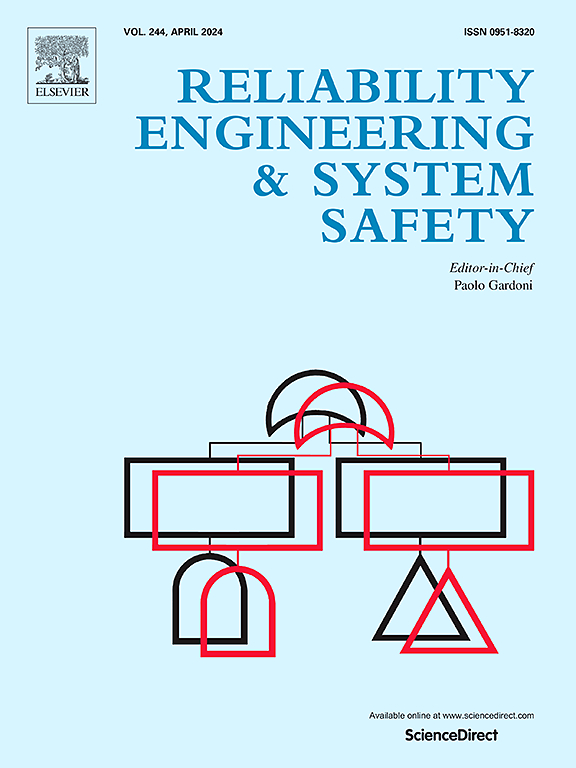Enhanced risk assessment framework for complex maritime traffic systems via data driven: A case study of ship navigation in Arctic
IF 9.4
1区 工程技术
Q1 ENGINEERING, INDUSTRIAL
引用次数: 0
Abstract
The era of big data has been characterized by an increasing diversity of information and a deeper application of system safety. In this context, this study proposes an enhanced risk assessment (ERA) framework to estimate traffic risk from massive data obtained in complex maritime traffic systems. The ERA framework adopts a 4R model that includes risk perception, risk cognition, risk reasoning, and risk control. The ERA framework integrates the Systems Theoretic Accident Model and Process and Stochastic Petri Nets to analyze the ship traffic process and develop risk control schemes. The feasibility of the proposed framework is demonstrated by a case study in Arctic waters. The results indicate that ice concentration represents a key factor for ship traffic in Arctic waters and that the risk control scheme type is related to the ice resistance level of ships. Accordingly, for ships with low ice resistance or no ice-class ships, the traffic risk is high when they are passing through the East Siberian, Laptev, Kara Sea, and the Vilkitskogo Strait, and icebreakers are required in July and October. In contrast, for ships with a higher ice resistance, regular traffic is generally possible for the East Siberian and Laptev Seas.
求助全文
约1分钟内获得全文
求助全文
来源期刊

Reliability Engineering & System Safety
管理科学-工程:工业
CiteScore
15.20
自引率
39.50%
发文量
621
审稿时长
67 days
期刊介绍:
Elsevier publishes Reliability Engineering & System Safety in association with the European Safety and Reliability Association and the Safety Engineering and Risk Analysis Division. The international journal is devoted to developing and applying methods to enhance the safety and reliability of complex technological systems, like nuclear power plants, chemical plants, hazardous waste facilities, space systems, offshore and maritime systems, transportation systems, constructed infrastructure, and manufacturing plants. The journal normally publishes only articles that involve the analysis of substantive problems related to the reliability of complex systems or present techniques and/or theoretical results that have a discernable relationship to the solution of such problems. An important aim is to balance academic material and practical applications.
 求助内容:
求助内容: 应助结果提醒方式:
应助结果提醒方式:


